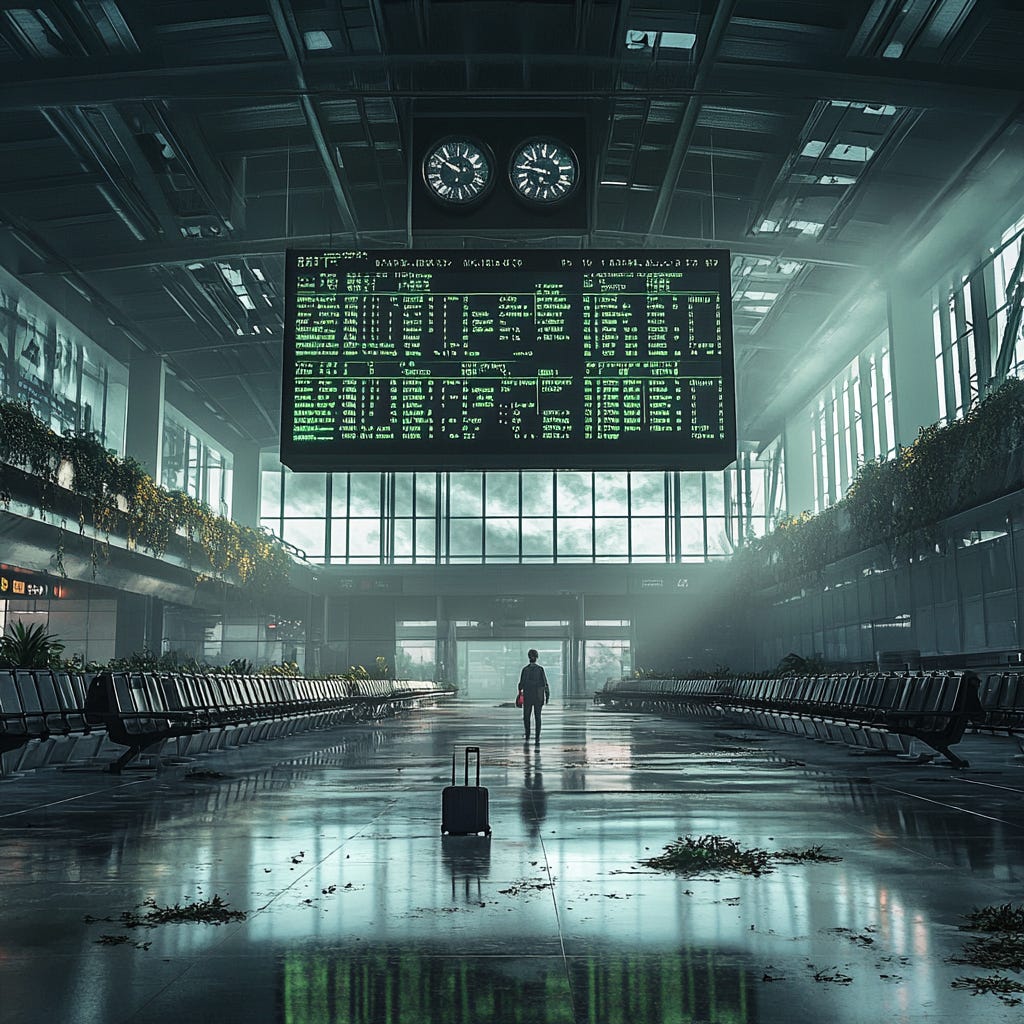When the Sky Stops: The Ritual of Delay
What Newark Airport reveals about the illusion of motion.
Movement is the ritual that defines modern life. Not the act of going somewhere—but the expectation that we can.
This week, that ritual cracked.
Newark Airport, one of the busiest transit hubs in the U.S., is in breakdown. FAA staffing shortages, radar failures, and cascading flight cancellations have paralyzed movement on the Eastern seaboard. United Airlines alone cut 35 flights per day. Passengers sat in corridors, not for hours—but for days. Not due to storms or sabotage, but because the system couldn’t keep up with itself.
This isn’t about Newark. It’s about belief. The quiet faith we place in mobility. That movement will always be available. That a gate, a seat, a route will appear when we need it.
When that breaks, something deeper is revealed.
The Illusion of Infrastructure:
Aging systems masked by PR. The FAA’s staffing crisis has been a known issue for years—papered over by digital boarding passes and premium lounge access.
Redundancy without resilience. Backup systems aren’t functional if the operators are overworked, traumatized, or absent.
Crisis isn’t the exception. It’s the default under pressure. The system works when unstrained. Collapse is not a bug. It’s baked in.
What the Ritual Hides:
Time debt. Delays aren’t neutral. They accumulate stress, cost, displacement. They reveal who can wait—and who can’t.
Authority theater. Even as planes stack up on runways, announcements insist “we appreciate your patience.”
Normalized inertia. When breakdown becomes common, we call it inconvenience. But it’s signal. It tells you the system is past capacity.
DE Conclusion:
This isn’t just a failure of scheduling. It’s a failure of narrative.
We aren’t delayed. We’ve been pretending the system could keep moving.
When the sky stops, what you hear is the truth beneath the engine noise.


